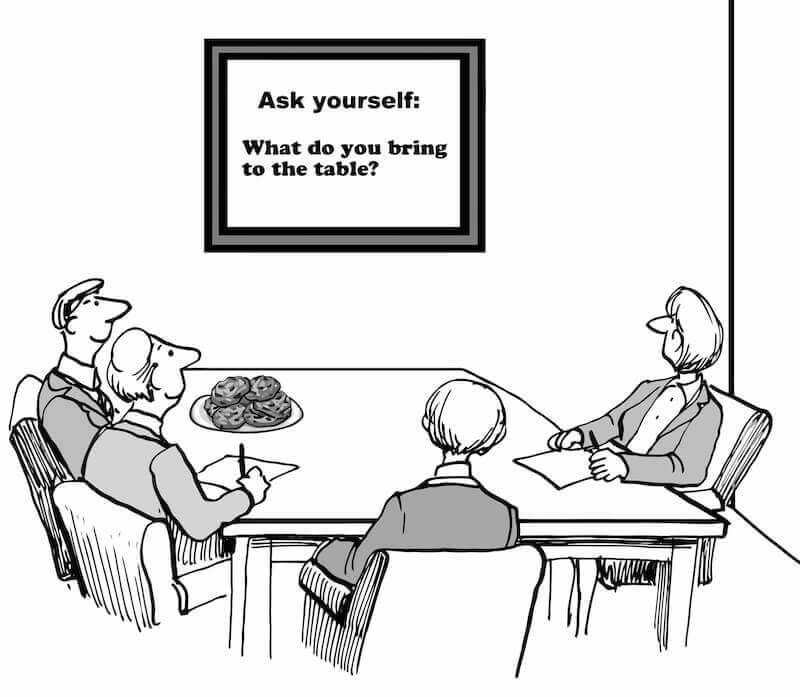The Best 10-Step Brand Development Strategy for Your Professional Services Firm
Watch Our Video
Did you know that consistent brand presentation across various platforms increases revenue by approximately 23%?
Unfortunately, many businesses do not realize that brand development is a lot more than a logo design.
Every piece of company collateral should maintain a similar tone, color scheme, and should communicate the same message.
Have we got your attention yet?
Continue reading or watch our video summary below to learn more!
What Is A Brand?
Your brand is intangible, yet the most crucial element of your business for communicating with your clients. It’s the primary reference point for how your clients perceive your business.
Professionally, your brand is the reputation your firm puts out there. Your brand gives your firm visibility in the marketplace.
Reputation, multiplied by visibility, measures the strength of a brand.
What Is Brand Development?
Brand development refers to building and strengthening the professional image of your firm. By building your brand, you’ll consequently develop your business.
Creating a brand is easy. The challenge lies in making a strong and successful brand.
Your business should always stand out from the rest of the competition. To do that, you must do more than build a brand.
What Is The Importance Of Brand Development?
You might be skeptical about the importance of brand building.
Why would you want to spend a significant amount of money on developing your brand?
The brand is an abstract concept, but these are the areas of your business it affects.
Referrals

A position reputation usually has the effect of increasing the number of references to your site.
When people feel attracted to your business, they are likely to refer their contacts to you. When non-clients realize you have a good reputation, they’ll want to work with you.
The way you position your brand also attracts expertise-based referrals.
If you come across as an expert in the field, people will want to interact with you for your expertise. One way to grow your expertise-based referrals is to promote your brand through blogs posts or articles.
The more visible your business brand is to your target audience, the higher the chance of increased sales from referrals.
However, remember that getting referrals is only half the battle. Beyond attracting referrals, you need proactive strategies to convert them to sales.
Lead Generation And Business Development
A strong brand has a positive effect on lead generation.
As a smart marketer, you can’t separate brand development from lead generation content. One of your brand development goals is to convert a prospect’s interest to an actual need for your solutions.
To achieve this, create valuable and relevant content to make prospects willing to share their contacts details.
Once you have their details, you can’t afford to have them disappointed by what you offer. Depending on how you handle the prospects, your sales will increase.
A firm with a well-developed brand will have fewer obstacles in converting leads to sales.
Firm Valuation
If you’ve got a strong brand, you can easily command premium rates in the marketplace. Firm valuation determines how much a customer will pay for what you offer.
With strong brand development, clients can trust your brand.
They’ll have no reservations about paying a premium because of the value they place on your brand. When your firm has a high value, you’ll experience faster growth and increased profitability.
It’s clear you’d want to gain these advantages of brand development.
Here are well-thought-out steps you can follow to be successful in developing your brand:
1. Identify What Your Brand Represents
Why did you create your business and what problem did you want to solve by establishing it?
One approach to developing the purpose of your brand is to create a mission statement. The mission statement need not be on public display to have an impact.
Your mission statement should serve as the internal guiding light that inspires your employees. If they know what your company represents, they will progressively work towards delivering those values.
2. Consider Your Business Strategy
What are the strategies you’re using to make your business grow? What are the specific, long-term goals you can achieve through the evolution of a successful strategy?
Remember, your business strategy affects all areas of your business. It’s directly connected to the needs of consumers and competitive environments.
Your brand is the component that makes you a powerhouse. A well-developed and differentiated brand will make it easy for your business to grow.
However, if your overall business strategy is wrong, brand development might not adequately complement it.
3. Identify Your Target Clients

When developing your brand, the main aim is to draw the attention of your clients.
If you don’t have a definition of whom your clients are, chances are you’ll fail miserably. When you have clearly defined target clients, your approach to brand development will best suit them.
High growth and profit firms come with defined target clients.
The more you narrow down on your target market, the faster your growth will be. If your definition of your target market is too diverse, it will dilute your marketing efforts.
4. Be Unique In Your Presentation
You probably have the same competitors selling the same products or services as you.
How do you ensure that you stand out and customers prefer to buy from your firm? The secret is in how you brand yourself.
The secret to aggressive marketing is in how you position your brand. How are other competitors positioning themselves to the target market?
Take all that and identify the opportunity to get more creative.
You can make your brand stand out through your unique value proposition. This tells your customers what to expect in their interaction with your brand.
Your customers should be able to feel the quality of what you provide. The intellectual property of your products or services is the total of the ideas your brand brings to the market.
5. What Is Your Messaging Strategy?
The next most crucial step is the messaging strategy you adopt.
It should translate the positioning of your brand into information your clients can understand. Your target audience includes the potential employees, referral sources, and potential clients among other influencers.
Your core branding strategy must cut across all audiences.
However, each audience shows interest in different aspects of brand positioning. Each audience will want you to address specific concerns.
They will also require you to offer different evidence to support your messaging strategy.
Remember that your messaging plan should address these concerns. This is crucial in making your brand stand out to your audiences.
6. Develop Your Website, Tagline, And Logo
One element that modern consumers look for in a brand is the website. This goes hand in hand with the logo and tagline.
They are the ones that jumpstart your customer experience. You, therefore, need to be very intentional when creating them.
How you design your website gives visual cues about the essence of your brand.
Your tagline expresses the personality of your brand in words. The elements of your brand are potential points of contact between customers and your brand.
Strive to maintain a positive impression that is as engaging as possible.
7. Conduct Market Research
For you paint the correct picture about your brand to the market, get to know them. This is only possible through market research.
There are an assortment of tools you can use to help define your ideal client. These include surveys that allow you to uncover their thoughts and feelings about services and products.
You can also research the market through focus groups.
They give you the platform to interact one-on-one with your audience while observing body language. Social media is another outlet where people let their guards down and say things as they are, particularly in private groups.
Alternatively, you can use online forums to find out what people you think could be your clients are saying about your brand.
These aren’t the only avenues you can use to conduct research. You need to be flexible enough to reach out to many markets.
8. What Do You Bring To The Table?

In carrying out all the above steps, be ready to tell your clients why they should care about your brand.
What are you doing differently that adds value to them? Your buyers should see what’s in it for them.
Write what motivates all of your buyer personas. This motivation should be at the core of every marketing message.
Find the most powerful motivators and focus on them for the success of your brand.
9. Build A Marketing Toolkit
One more step in brand development is to build a marketing toolkit.
This can be a one-page sales sheet that describes all your services or markets you serve. It can also be an overview of the key offerings of your firm.
Your marketing toolkit will be more profound if you can include a video. Popular video topics are case studies, firm overviews, or “meet our partners.”
10. Implement, Monitor, and Review
It won’t make sense for you to go through the above stages and not implement them.
Implementation is the most important thing you can do for your brand development strategy. Unfortunately, most businesses miss this step because other business processes overtake it.
After implementation, track to see how well the brand development strategy is working.
Analyze how each step is working towards growing and strengthening your brand. If any of the strategies are not working as they should, review and revise accordingly.
Final Thoughts
Brand development is more than just having your business name in the marketplace.
Remember that it’s about having a strong reputation. However, it should be a positive association that will bring you sales and grow your brand.
Clients should want to associate with your brand.
To make them do this, develop your marketing language and value proposition. Let your clients know what you’re bringing to the table and what makes you different from the competition!
Related Articles
How To Identify Your Ideal Customer Avatar
April 9, 2019
Watch Our Video Whenever you’re marketing a product or service, you need to understand who you’re aiming all the content at. Ask yourself: Who is…
0 Comments12 Minutes
Move Your Brand: Importance of Mobile Marketing
Marketing,Branding,Digital Marketing,Social Media
April 2, 2019
Watch Our Video Imagine your customers having access to your product, services and brand information right in the palm of their hands anytime,…
0 Comments15 Minutes
Marketing Consulting Services: Objective, Evidence-Based Solutions
Marketing,Digital Marketing,Business Management
March 26, 2019
Watch Our Video When you’re looking to devise a marketing strategy, there’s often the need to call for outside help. And no... you can't call…
0 Comments8 Minutes
How much should my small business marketing budget be?
Marketing,Digital Marketing,Business Management
March 5, 2019
Watch Our Video Marketing budgets are one of the most debated topics in the business world. Everyone wants to know how much they should spend,…
0 Comments13 Minutes
Boost Your Brand: 6 Creative Branding Strategies for Businesses
February 26, 2019
Watch The Video Does your company have what it takes to pull off a creative branding strategy? We know that you do! That's why we're here to give…
2 Comments8 Minutes
Stop Trying To Do It All Alone! Why You Need A Marketing Firm
Marketing,Digital Marketing,Business Management
February 12, 2019
Watch The Video Are you looking to build your business's brand or sell more products? You likely need to invest in your marketing budget to get…
0 Comments7 Minutes
How this brand got millions of free views by leveraging their fans
December 13, 2018
Watch Video Summary The next wave of marketing is here. It’s not search engine optimization, video, social media… it’s word-of-mouth marketing.…
0 Comments7 Minutes






Great post. Developing a strong brand strategy enables you to identify and refine your core client profiles, then target marketing to the appropriate niche markets. Knowing your target markets also allows you to hone key messaging that strikes a cord with their specific needs. A defined brand strategy identifies your target markets, consolidates and addresses their individual needs and also provides an insight into their ongoing requirements. At Chilli, branding is one of our biggest passions. We don’t put a logo on a blank piece of paper and send you off. We breathe life into your entire brand and we market it to achieve the longevity and results you crave. From our Sunshine Coast graphic design studio to our strategic marketing team, we cover all the bases and elicit real growth for your business.